Juvisy-sur-Orge
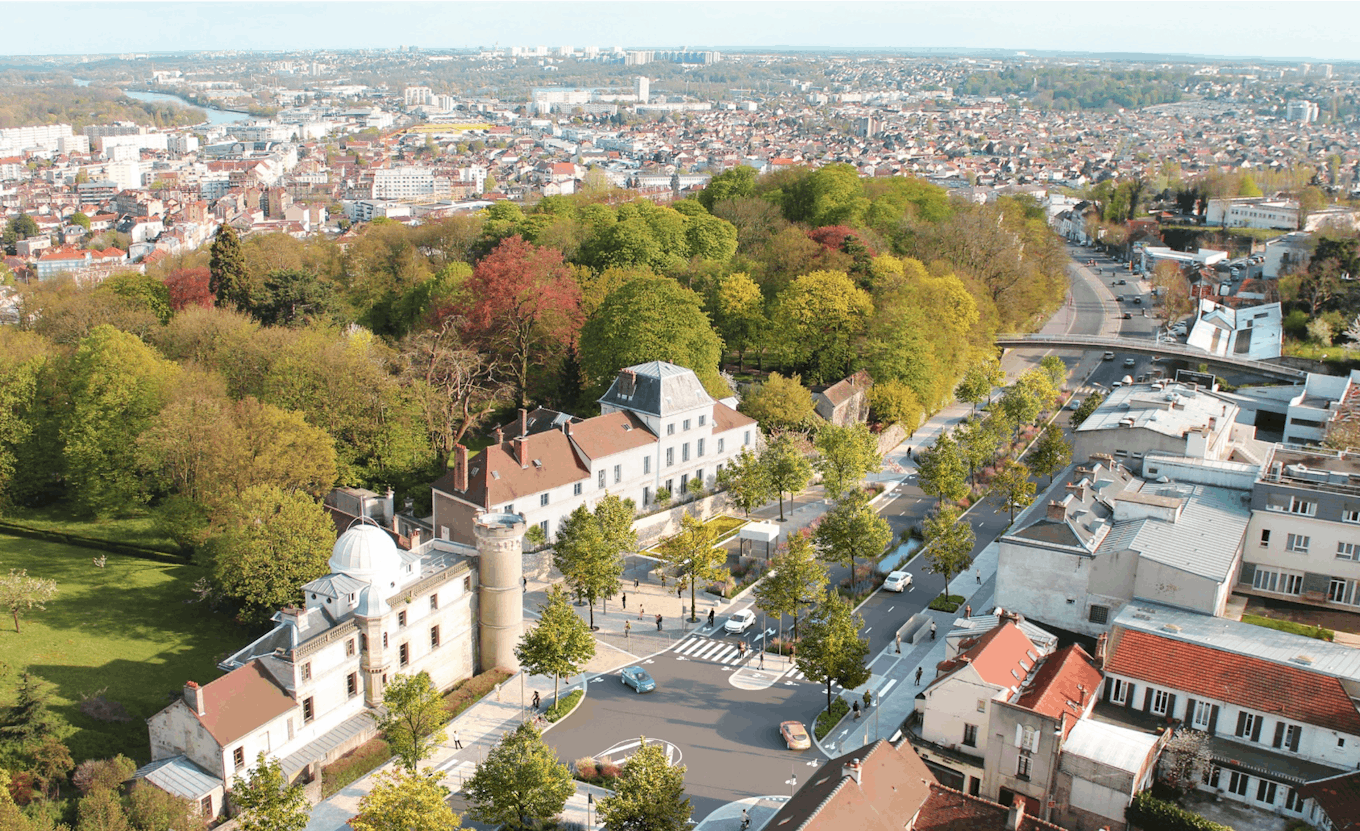
Facilitating travel, improving the living environment
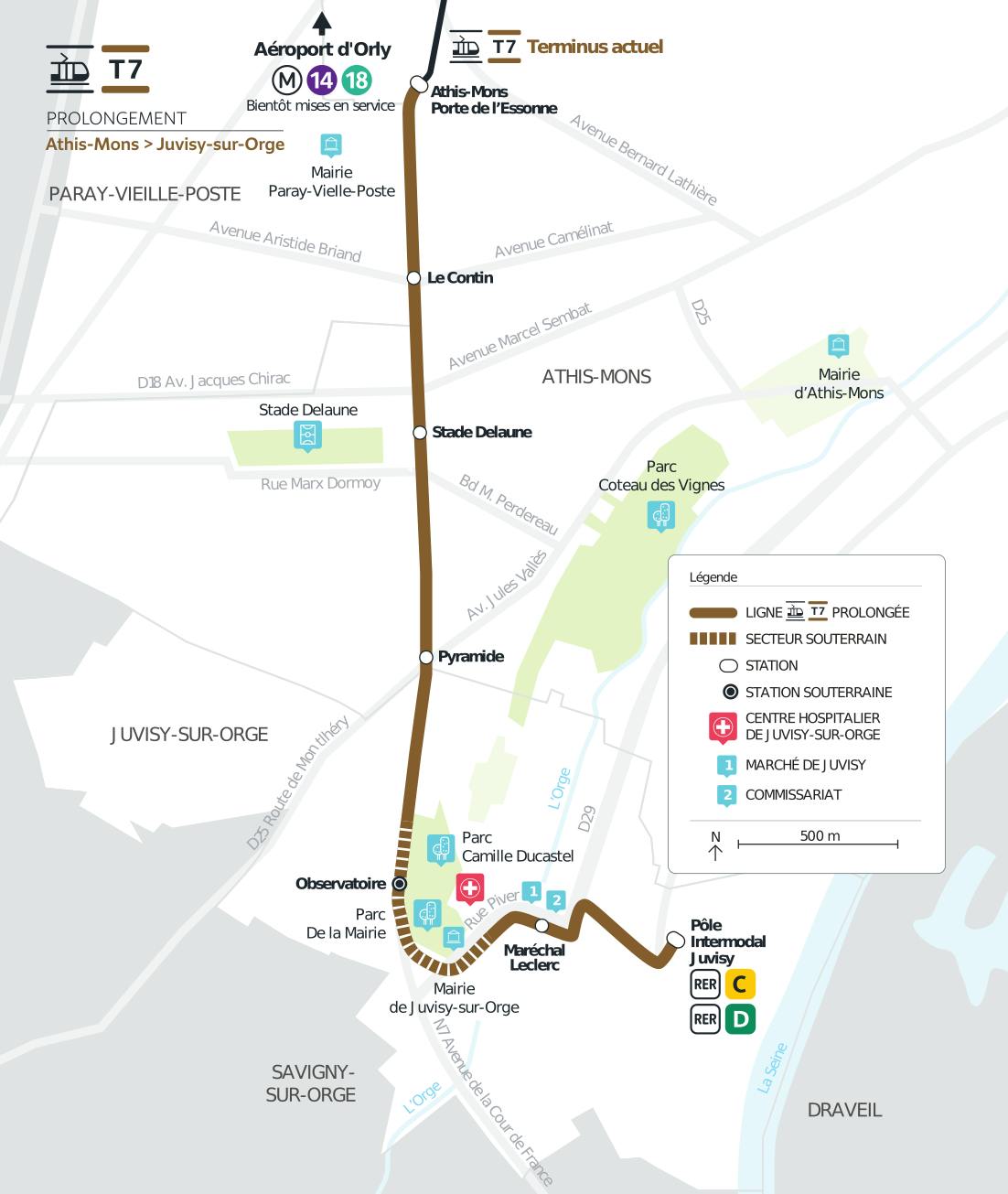
Completely redeveloped, the RN7 will be transformed into an urban boulevard planted with trees and vegetation, a peaceful axis where every mobility finds its place.
- 1 tram lane in each direction, in the centre of the road
- 2 car lanes in each direction
- Maintaining parking, outside the T7 tram stations
- Sidewalks for pedestrians
- Landscaping
With the urban development along the RN7 and the arrival of metro 14 at Orly, the T7 tram will be essential to reach the Orly-Rungis employment centre and not generate more traffic congestion
The Observatory Station and the Park
The Observatory Station
The Observatoire underground station will be built under the future forecourt. Once completed, the station and the forecourt will form a meeting place uniting the Observatory, the Ducastel building, the park and the connections with other means of transport. The facilities at the Camille Flammarion Observatory are defined in consultation with the Architect of the Buildings of France The station will be 100% accessible to people with reduced mobility (PRM), thanks to lifts.
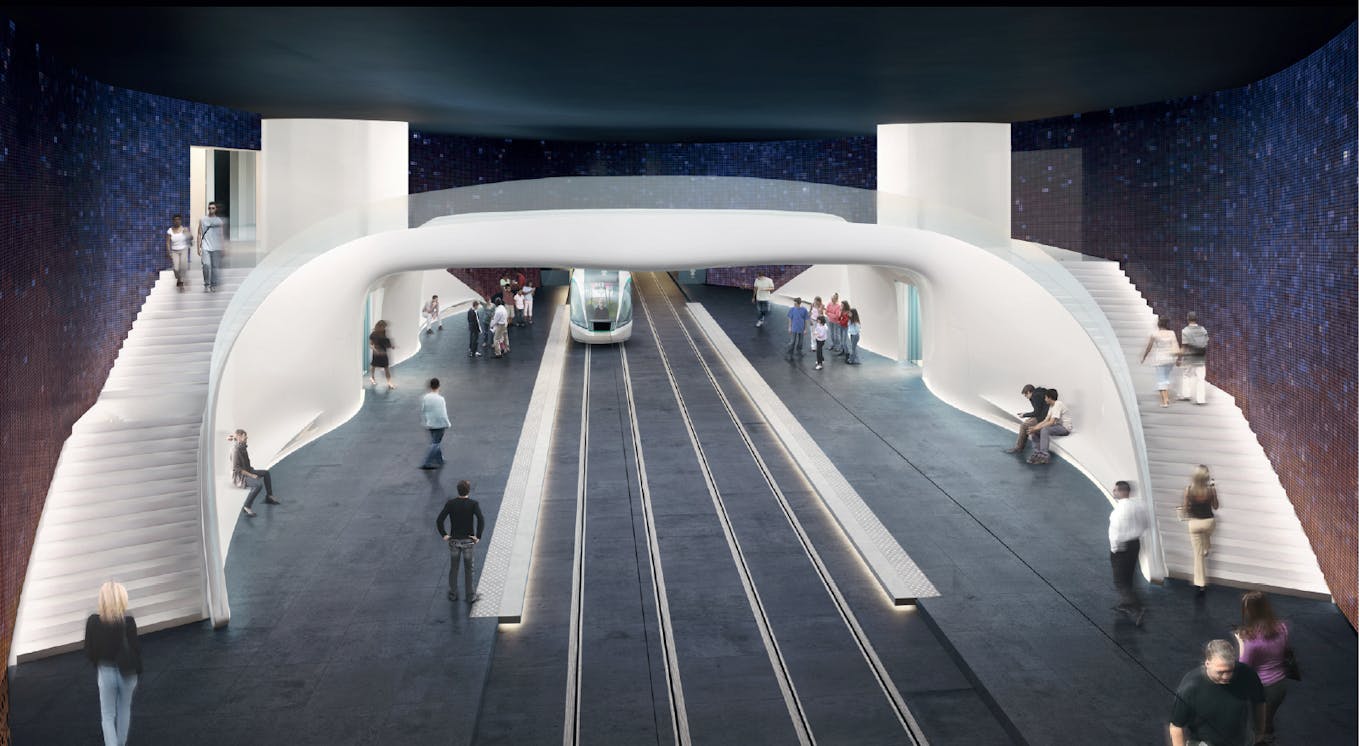
The park
To provide the best possible service to the city and ensure reduced travel times, the T7 tram will run under the Parc Ducastel and the Parc de la Mairie. The construction zone will be located along Piver Street and the work methods (see below) have been defined to reduce the work zone located in the park. The work will require tree cutting, which will be reduced to the strict needs of the site. At the end of the work, the park will be restored, with tree planting, quality landscaping and the development of new uses in the park.
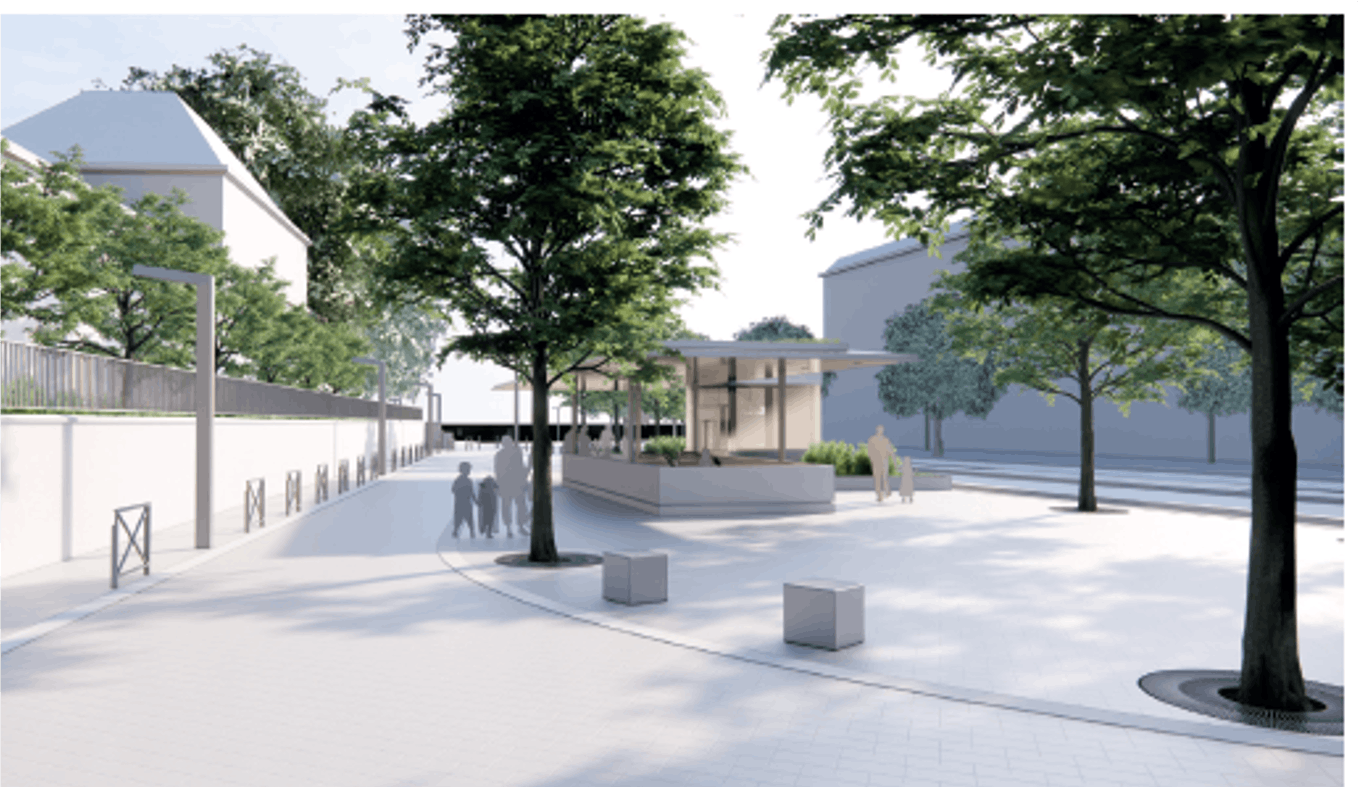
Traffic during the works
On Rue Piver, the work will result in a one-way street for about 22 months, a two-way reopening for about 23 months and a closure for 7 months along the construction zone with access for local residents. The work schedule has been drawn up to maintain as much traffic in both directions as possible.Along the RN7, the construction zone will be set up in the middle of the carriageway in order to preserve as much as possible 2x2 lane traffic. To do this, the work will be organised by section and half-carriageways. Traffic on this axis will thus be maintained during the work.
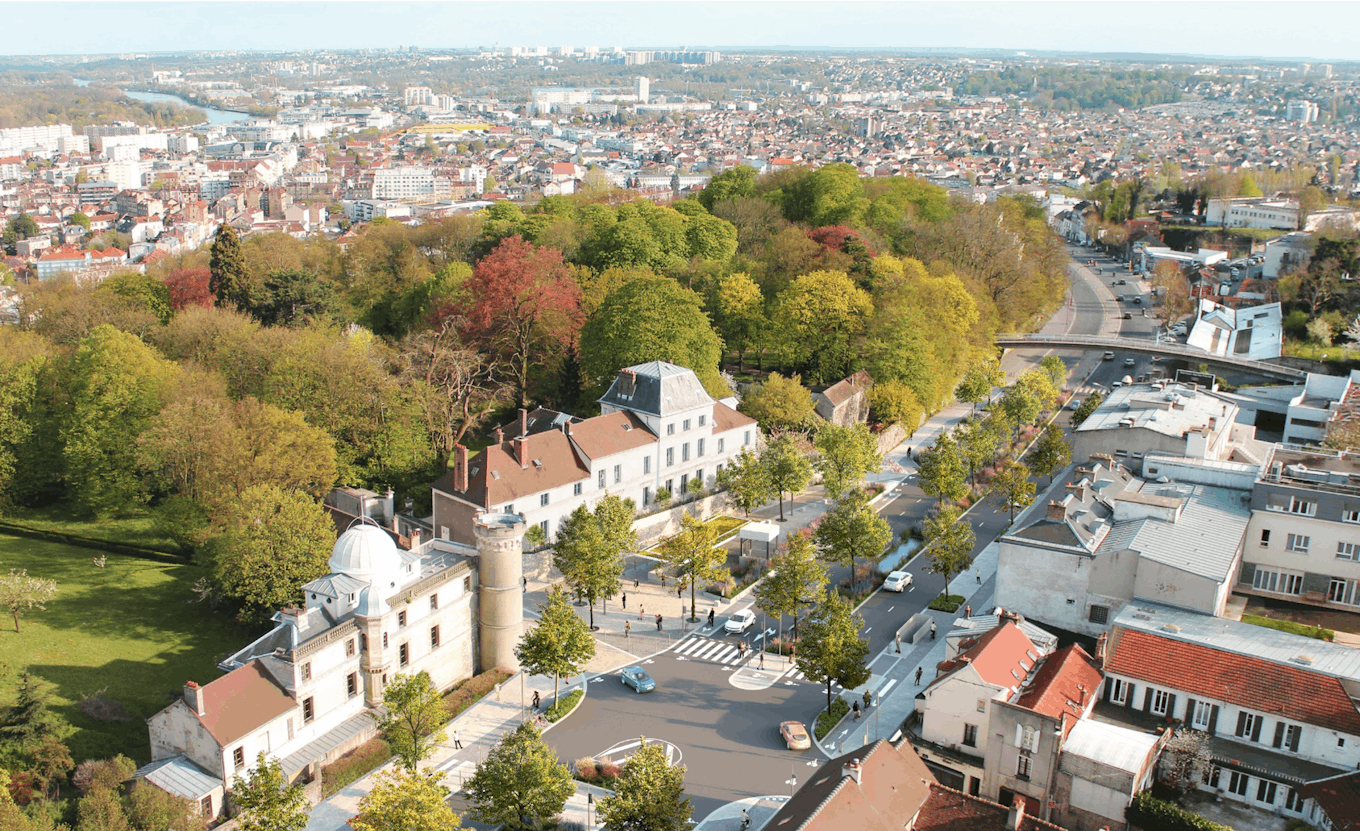
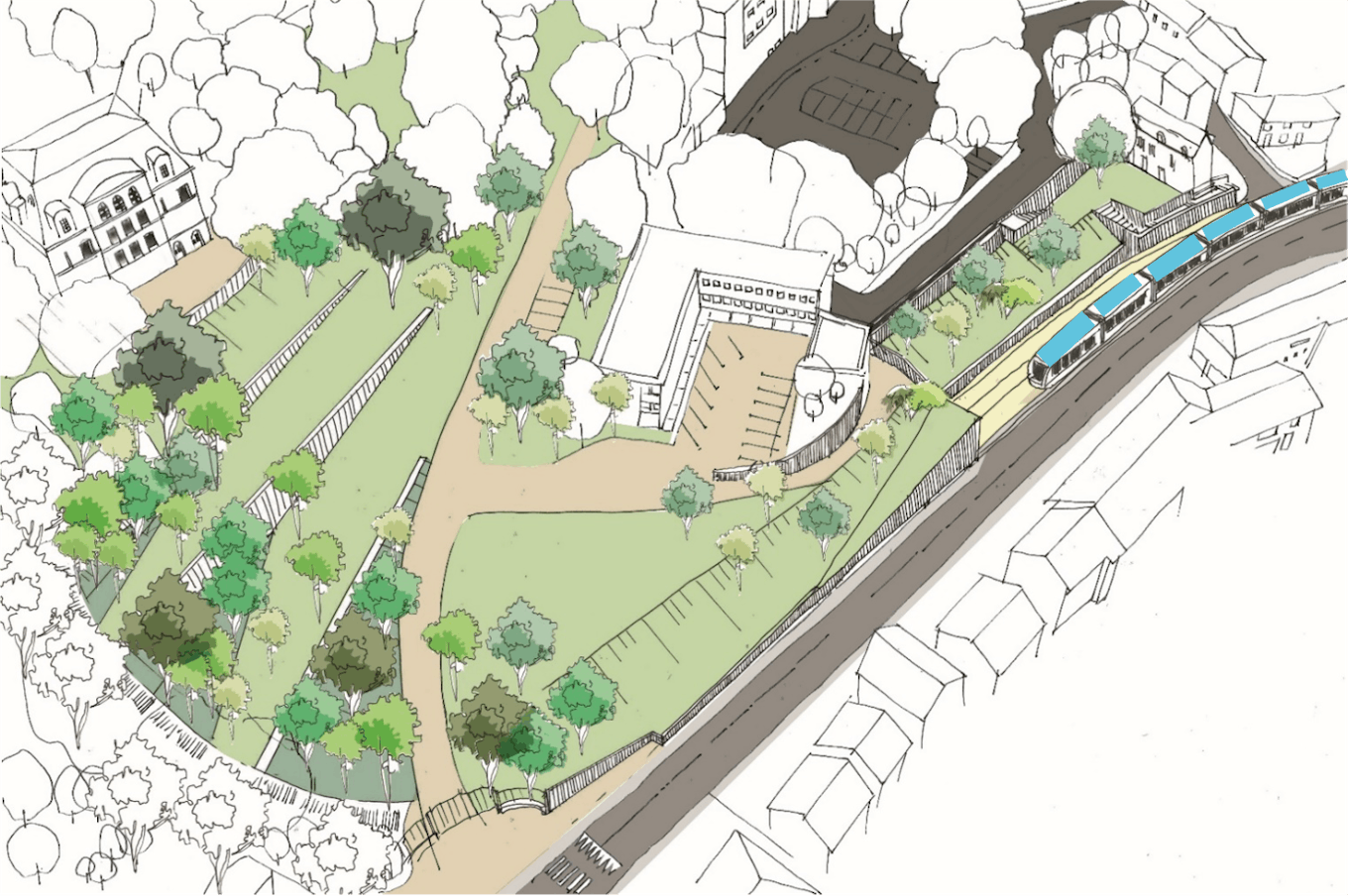
Attention paid to landscape heritage
The redevelopment of the park will be carried out in consultation with the Architectes des Bâtiments de France and the City: reforestation of the park to maintain biodiversity, broadening the perspective on the park and development of new uses in the park.
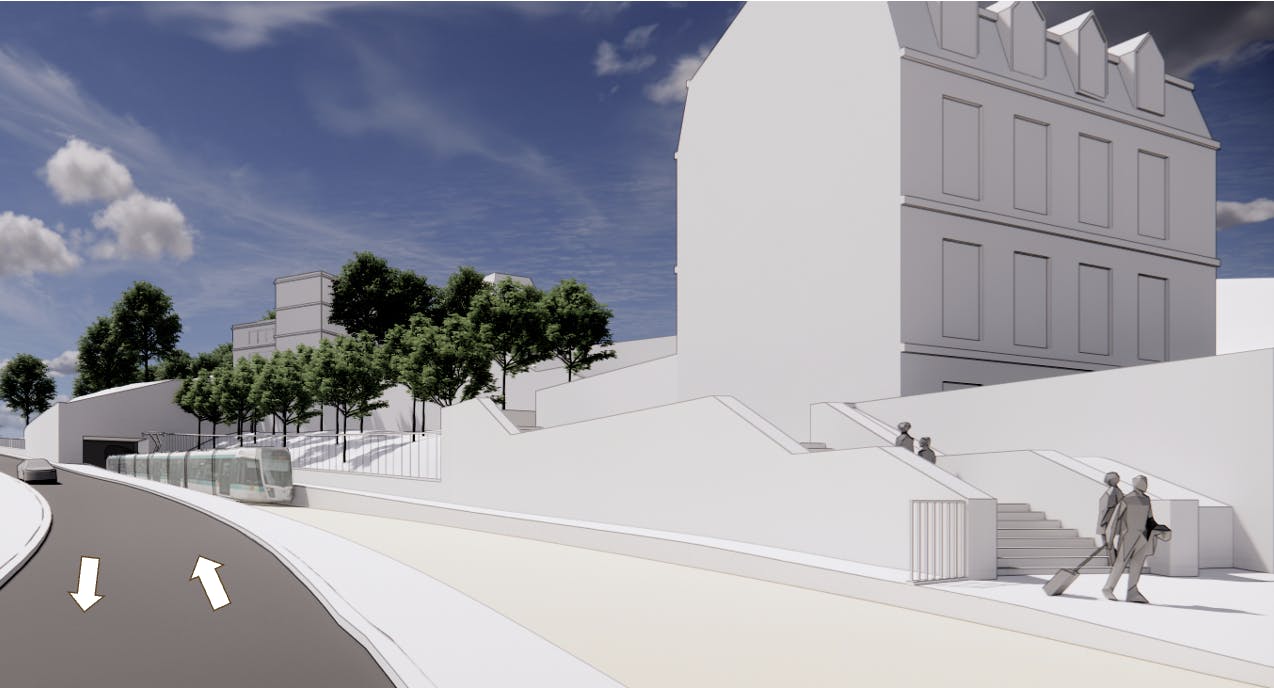
The Maréchal Leclerc station and the city centre
After crossing the rue du Maréchal Juin, the T7 tram will stop at the Maréchal Leclerc station. Located in the immediate vicinity of the covered market, this station will serve the city centre of Juvisy-sur-Orge.
The rue du Maréchal Juin will be developed with the tramway tracks, a lane dedicated to motorists and sidewalks reserved for pedestrians. The landscaping and urban development will be carried out in line with the project to reopen the Orge.
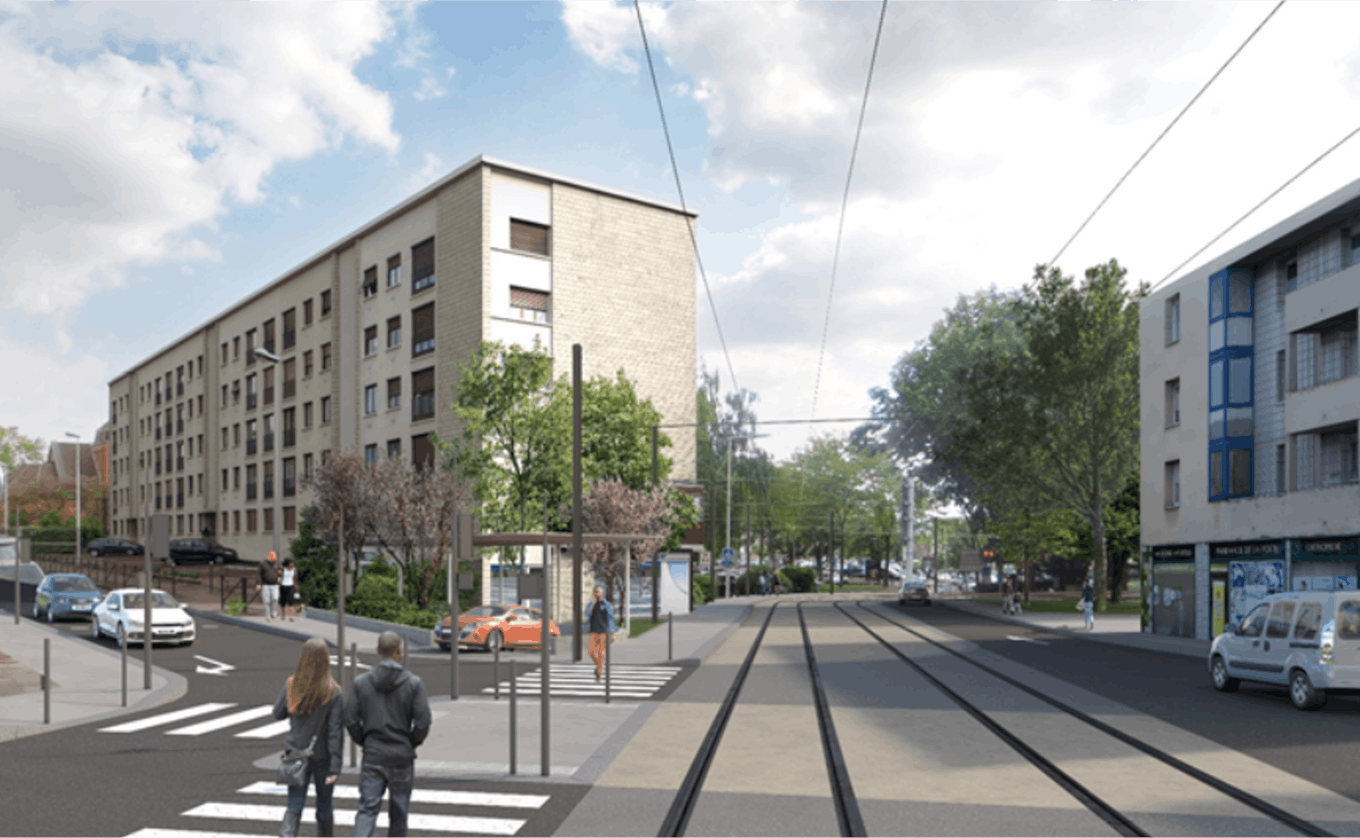
The Juvisy multimodal hub station
To reach the terminus of the line, the T7 tram will take Avenue d'Estienne d'Orves. As the gateway to the city, this avenue will be widened and redeveloped: the tramway, buses and motorists will share the same lanes. Sidewalks will be set up for pedestrians. Landscaping will also be put in place.

Preparatory and concessionary works
On the RN7, the T7 tram will run in the centre of the road. To build the future tramway tracks, it is therefore necessary to free up the spaces in the centre of the current roadway. This implies the removal of the central medians, including those planted.
To maintain 2×2 lanes of traffic as much as possible during the work, temporary traffic lanes will be created by widening the carriageway on the shoulders. For the duration of the work, the sidewalks will be reduced and the trees cut.
The concession works consist of moving the networks (gas, electricity, telecommunications, water, sanitation, etc.), currently located under the future tramway platform. Thus, tram traffic will not be affected by future maintenance operations on these networks. They also require the removal of trees located on the sidewalks.
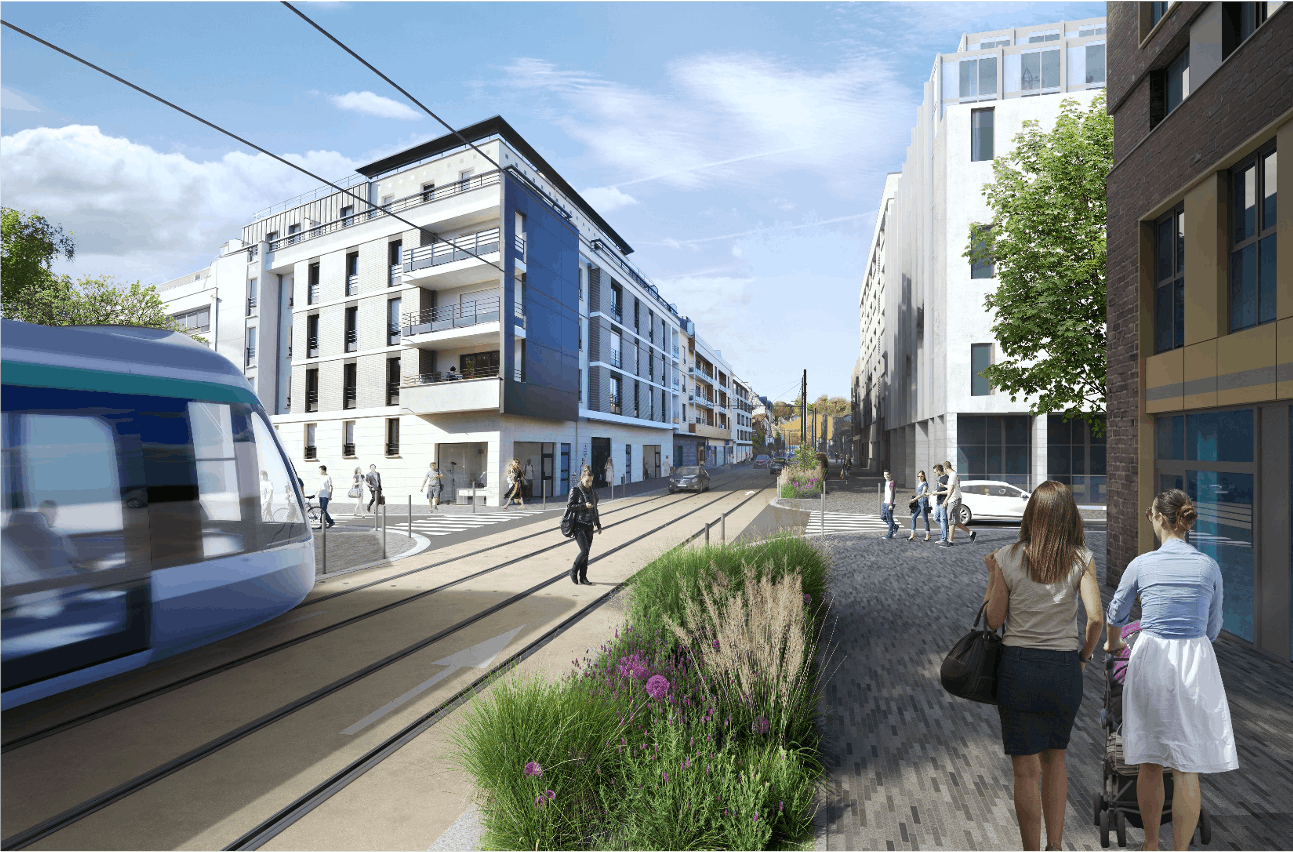
Before carrying out these operations, every precaution was taken to ensure that wildlife would not be impacted. In the autumn of 2022, an ecological diagnosis made it possible to verify that none of the trees concerned were home to bats or nesting birds. The felling of trees will not impact any protected species.
273 trees will be planted on the RN7 (for 79 trees cut). Chestnut trees, maples, beeches, tulip trees, ash trees, honey locusts, poplars or Japanese cherry trees, etc. : nearly 22 species of trees will be replanted along the tramway line.
The project plans to find alignments of trees, but also to bring more biodiversity by integrating various plantings.
